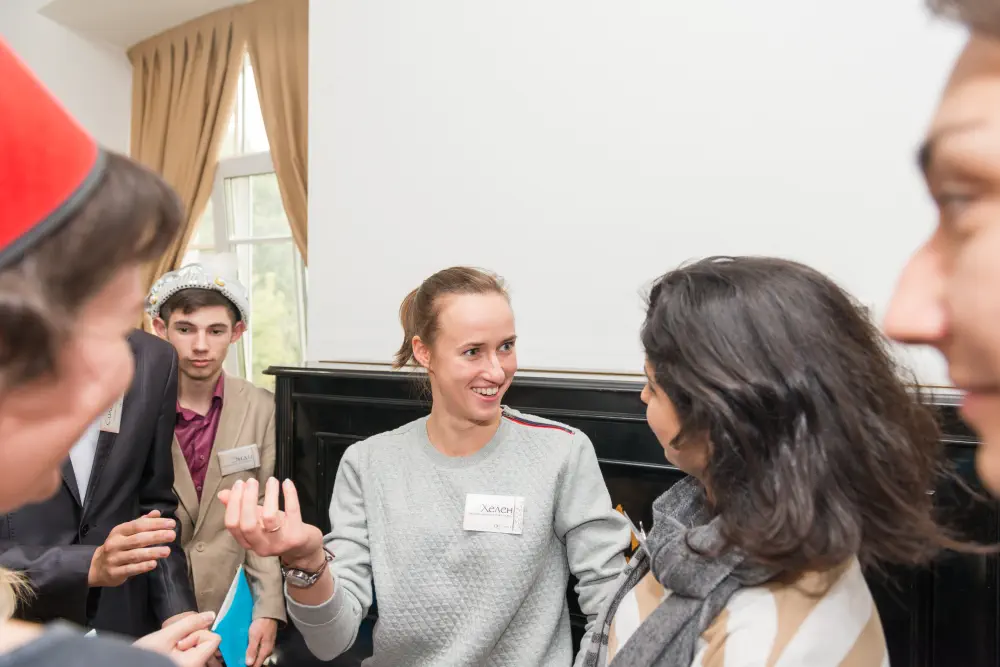We offer medical detox and multiple addiction treatment options in our
luxury treatment centres in Port Hope, Cobourg, and Ottawa.
How the D.A.R.E. Drug Program Works to Prevent Addiction in Canada
Imagine a classroom filled with curious ten-year-olds sitting cross-legged as a police officer talks about making smart choices. This scene unfolds in schools across Canada through the D.A.R.E. drug program. Short for Drug Abuse Resistance Education, this program gives kids practical tools to stand up to peer pressure and choose healthier paths.
Key Takeaways
- D.A.R.E. connects police, schools, and families across Canada to help youth avoid substance use.
- It teaches practical skills like decision-making and peer resistance through interactive lessons.
- D.A.R.E. provides honest substance education, builds self-esteem, and promotes healthy alternatives.
- Ongoing community involvement and trained officers keep the program relevant and effective.
It's become a fixture in Canadian schools, linking police officers, teachers, and families in a shared mission: keeping young people substance-free during their most impressionable years.
What Is the D.A.R.E. Program?
Back in Los Angeles in 1983, the D.A.R.E. program began when local police teamed with educational institutions to address young drug use. Originally a little local project, what started out quickly grew all throughout the country and finally crossed boundaries. It now runs in more than 40 countries, with Canada adopting its own version of the D.A.R.E. drug program in the late 1990s, tweaking it to fit Canadian realities.
Unlike the "just say no" campaigns of years past, D.A.R.E. focuses on building skills kids can actually use. They learn how to make solid decisions, build confidence in themselves, and push back when friends pressure them to try drugs or other harmful substances. These aren't just drug-avoidance skills either – they're life skills that help with all sorts of challenges growing up.
The program runs as a series of 10 lessons, each building on what came before. Classes last about an hour, covering everything from personal boundaries to spotting and avoiding risky situations. But don't picture boring lectures – these sessions are hands-on. Kids role-play tough scenarios, debate in groups, and practice the exact words they might need when someone's pushing them to try something they shouldn't. This practical approach helps the lessons stick long after the D.A.R.E. drug program wraps up.

Implementation of D.A.R.E. in Canada
The D.A.R.E. drug program looks a bit different depending on where you are in Canada. Each region puts its own spin on things while keeping the heart of the program intact:
- Provincial Integration - Schools in BC have woven the program deeply into their health classes, making it feel like a natural part of the curriculum rather than an add-on. Over in Ontario, you'll typically find D.A.R.E. targeting grades 5-6, catching kids right before they start facing serious peer pressure.
- Regional Adaptations - Up north, the program might focus more on certain substances that are common in remote communities, while urban areas might emphasize different concerns. It's this flexibility that keeps the program relevant, whether you're in downtown Toronto or a small town in Manitoba.
- School Integration - Most schools don't treat D.A.R.E. as an optional extra. They carve out dedicated time slots, treating these lessons as seriously as math or reading, because in many ways, these life skills matter just as much.
- Law Enforcement Involvement - The officers who teach D.A.R.E. aren't just any cops. They've gone through special training that covers not just drug facts but also how to connect with kids and hold their attention. They become familiar faces in the classroom, breaking down the barriers between young people and police.
- Community Connections - D.A.R.E. extends beyond school walls. Local health clinics might reinforce the messages during check-ups. Community centers might offer after-school programs that build on D.A.R.E. concepts. Parents get resources to continue the conversations at home. This creates a web of support around kids.
When people ask what the DARE program implementation is like in Canada, the answer varies by community. But this adaptability is exactly what helps it work in different settings, from bustling urban schools to tiny rural classrooms.
How D.A.R.E. Aims to Prevent Addiction
The D.A.R.E. drug program isn't just trying to scare kids away from drugs for a few months. It has bigger aims: pushing back that first experiment with substances (or preventing it altogether), building skills that protect against all sorts of risky behaviours, and creating stronger bonds between kids and their communities.
Success isn't measured just by how many kids avoid drugs. The program tracks whether students understand more about substances, make better decisions, feel more confident standing up for themselves, and talk more openly with adults they trust. This broader approach recognizes that addiction treatment becomes unnecessary when prevention takes root early.
Education and Awareness
Knowledge is power – but not the scared-straight kind. The D.A.R.E. drug program gives kids honest, age-appropriate facts about different substances. Instead of exaggerated horror stories, students get the real deal: what these substances do, why they're especially harmful for young brains, and what legal trouble might follow.
Students learn that addiction isn't just about bad choices – it's a health issue affecting the brain. They explore why people might try substances in the first place, which helps demystify the topic. When something isn't forbidden and mysterious, it often becomes less tempting.
Developing Decision-Making and Critical Thinking
D.A.R.E. teaches kids a simple but powerful approach: "Stop, Think, Act." When faced with a tough choice, they learn to pause, consider their options, think about what might happen next, make their decision, and later reflect on how it went. Through practice with increasingly tricky scenarios, students build their decision-making muscles.
They also sharpen critical thinking skills that apply specifically to substance situations. Kids learn to question what they hear, spot manipulation, check information sources, and think several steps ahead. These skills help with everything from homework to friendships, not just avoiding substances.

Building Peer Resistance and Refusal Skills
The D.A.R.E. drug program really shines when teaching kids how to say no. Students don't just learn one canned response – they practice a variety of techniques that match different personalities and situations. Some might work better with a straightforward "No thanks," while others might do better suggesting an alternative activity or using humour to change the subject.
Role-playing is key here. Kids actually practice these refusal skills out loud, in front of their classmates, making the responses more automatic when they face real pressure. Research shows this kind of rehearsal dramatically increases the chances they'll actually use these techniques when it counts.
Fostering Self-Esteem and Positive Self-Image
Kids who feel good about themselves generally make better choices. D.A.R.E. includes activities that help students recognize their strengths, set realistic goals, celebrate wins (even small ones), and bounce back from disappointments. They explore their personal values and think about how different choices align or clash with what they believe in.
This identity work creates motivation from within. Instead of avoiding substances just because some adult said so, kids start to see how certain choices might get in the way of who they want to be and what they want to achieve. Internal motivation sticks around much longer than external pressure.
Promoting Healthy Lifestyles and Alternatives
Some kids turn to substances looking for excitement, stress relief, or social connection. The program shows them healthier ways to get these same benefits – sports, arts, volunteering, clubs – activities that build skills and positive relationships while providing the experiences many young people crave.
The D.A.R.E. drug program also tackles stress head-on, teaching specific ways to handle tough feelings without turning to harmful substances. Kids learn about physical outlets, mindfulness techniques, creative expression, and when to ask trusted adults for help. These coping skills serve them well through the ups and downs of adolescence.

Connecting Lessons to Real-Life Situations
Learning sticks when it connects to real life. D.A.R.E. officers bring in examples that feel relevant to kids' actual experiences. In a rural fishing community, scenarios might involve different situations than in a major city, but the core skills remain the same. This customization helps students see how these lessons apply to their own lives.
Take-home assignments often involve talking with family members about program topics. This creates perfect openings for parents to share their own values and experiences, personalizing the lessons even further. These school-to-home connections significantly boost how well the program works.
Evolution of the D.A.R.E. Program
The D.A.R.E. drug program has changed dramatically since its early days. Gone are the scare tactics and "just say no" simplicity. The biggest shift came with the "keepin' it REAL" curriculum, which brought in strategies backed by research and focused on social-emotional learning. The REAL acronym: Refuse, Explain, Avoid, and Leave, gives kids practical options they can actually use when facing pressure.
This change wasn't random. Research showed that simply telling kids to avoid drugs wasn't enough. The updated approach draws on prevention science and studies showing what actually works to influence young people's choices. Canadian versions of the program have benefited from these improvements while keeping content culturally relevant.
Key curriculum developments include:
- A deeper focus on decision-making processes rather than memorizing facts
- New material connecting mental health with substance use prevention
- Updated content addressing cannabis legalization and what it means for kids
- Fresh modules covering vaping, prescription drug misuse, and newer substances
- Lessons helping kids navigate online information and spot misinformation
- Techniques for recognizing and resisting pressure through social media
The training for D.A.R.E. officers has evolved, too:
- Intensive certification that covers both substance information and teaching techniques
- Regular updates on the latest substance trends and youth culture
- Advanced training in adolescent development and classroom management
- Canada-specific training addressing local laws, healthcare systems, and resources
- Cultural sensitivity preparation for working in diverse communities
- Strategies for engaging parents and community partners in prevention efforts
These ongoing changes help the D.A.R.E. drug program stay connected to young people's actual experiences. By constantly refreshing both what's taught and how it's delivered, the program addresses questions about whether the DARE program works by staying relevant in a rapidly changing world.
The Role of Parents and Communities
Engagement Strategies
Parents don't just hear about the D.A.R.E. drug program when permission slips come home. Many schools host orientation sessions where parents learn about program concepts in everyday language. Take-home materials suggest ways to reinforce lessons during normal family time. Parent guides offer conversation starters, family activities, and tips for answering tricky questions kids might ask.
Some Canadian communities go further, offering workshops alongside the student program. These sessions help parents understand current substance trends, recognize warning signs, and develop more effective ways to talk with their kids about these topics. When parents and D.A.R.E. officers use similar language and concepts, it creates a consistent message that's more likely to stick.
Community Support Systems
Research confirms what seems obvious: standalone programs rarely create lasting change. That's why effective D.A.R.E. drug program implementations hook into broader community efforts. Local youth centers might offer "D.A.R.E. Plus" activities – supervised social events where kids can practice their new skills in real-world settings.
Community coalitions bring together schools, health agencies, treatment providers, police, and youth organizations to coordinate their prevention work. This teamwork ensures kids hear consistent messages across settings, strengthening protective factors and reducing mixed signals that might confuse them.
Feedback Mechanisms
Programs that don't evolve quickly become irrelevant. Many Canadian D.A.R.E. implementations gather regular feedback from everyone involved – students, parents, teachers, and community partners. This information helps fine-tune the program for local needs and address new concerns as they pop up.
Students share their perspectives through surveys, discussion groups, and assessment activities built into lessons. Their feedback often highlights which program elements resonate most strongly and which parts need updating. This approach treats young people as active participants rather than passive recipients of information.

Building Stronger Futures with DARE
The D.A.R.E. drug program works as a bridge connecting schools, police, and families in a shared goal of helping kids make healthier choices. While it looks different from province to province, its core elements remain: trained officers, interactive lessons, and skills that kids can actually use. The program develops specific abilities, smart decision-making, effective refusal skills, healthy self-image, and stress management, which protect against substance problems.
As youth culture shifts, so does the D.A.R.E. drug program, adapting to address new substances, changing laws, and technology's influence. Its success depends on balancing proven approaches with the flexibility to meet emerging challenges. Canadian versions continue developing their own identity while staying grounded in what research shows actually works.
For anyone wondering about the DARE program's meaning or purpose, local police services can provide information. Those needing addiction treatment or searching for a rehab centre can find guidance at our Canadian Centre for Addictions. Through ongoing teamwork and dedication to youth well-being, programs like D.A.R.E. help build healthier communities across Canada.
FAQ
What is the DARE program's age range in Canada?
The D.A.R.E. program primarily targets students in grades 5-7 (ages 10-13), though some regions offer modified versions for both younger and older students.
How long has the D.A.R.E. drug program been operating in Canada?
The program has been active in Canadian schools since the late 1990s, with continuous updates to reflect changing substance trends and prevention research.
Does the DARE program work according to research?
Research shows the updated curriculum is most effective when it focuses on skill-building rather than just information delivery, and when it's reinforced through community and family support.
What topics does the D.A.R.E. drug program cover beyond illegal substances?
The modern curriculum addresses vaping, alcohol, prescription drug misuse, cannabis (post-legalization), online safety, and mental health connections.
How can parents reinforce the DARE program's meaning at home?
Parents can use the program's take-home materials, maintain open conversations about substances without judgment, and consistently model healthy coping strategies and responsible decision-making.





